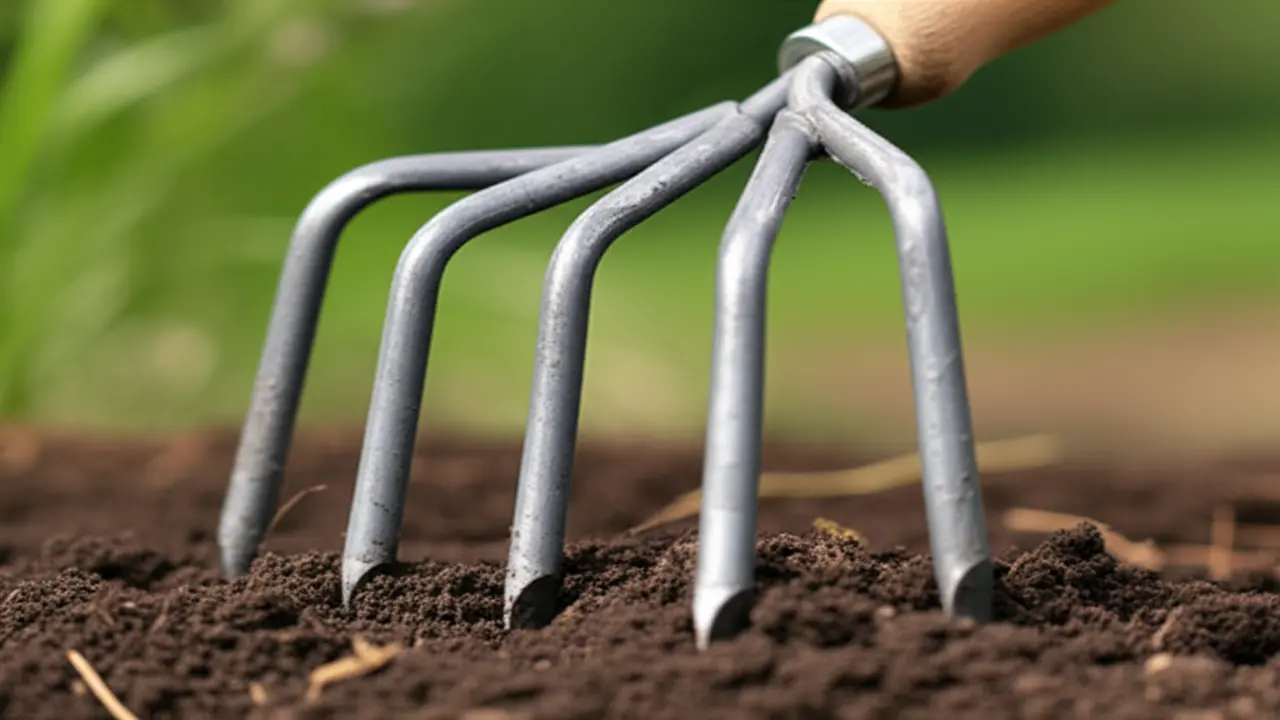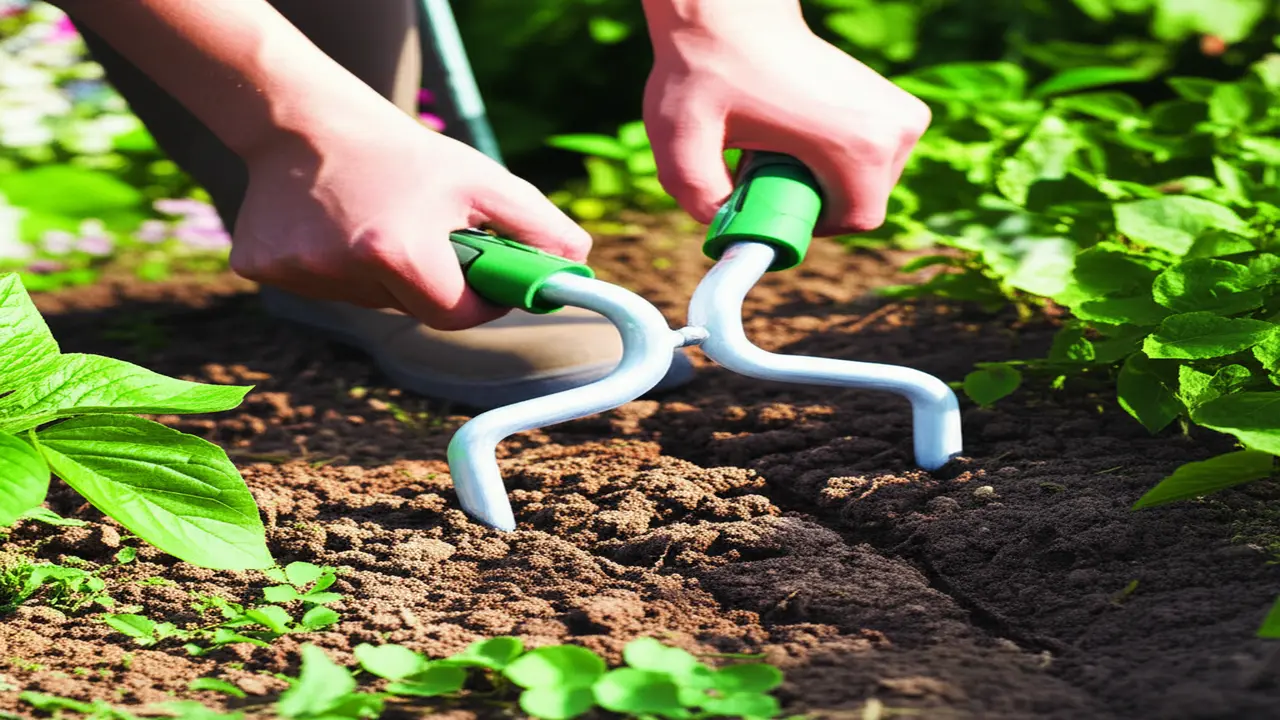Beginner Hand Cultivator Guide: Essential Tips for 2025
If you’re starting out in gardening, a hand cultivator is one of the most useful tools to have in your shed. This simple yet versatile garden cultivator helps with a variety of tasks, from loosening compacted soil to gentle weeding, making it a top choice among beginner gardening tools. In this comprehensive guide, we’ll cover everything you need to know about buying, using, and caring for your hand cultivator in 2025.
Understanding Your Hand Cultivator: Simple Anatomy
At its core, a hand cultivator consists of two main parts: the handle and the tines (also called prongs). The handle is usually made of wood or a durable plastic, designed to fit comfortably in your hand. The tines—typically three metal prongs—are sturdy and curved to loosen soil effectively without damaging roots.
Most beginner hand cultivators feature a 3-tine design, which balances ease of use with efficiency. The metal tines penetrate the soil for aeration and weed removal. Keep in mind, you might encounter variations such as 5-tine models, but for general gardening tasks, a 3-tine tool offers excellent versatility.

Why Use a Hand Cultivator? Essential Beginner Tasks
The hand cultivator is more than just a simple garden tool. It serves multiple essential functions, particularly valuable for beginners. Here are some of the key tasks you can perform with your hand cultivator:
- Loosening Soil: Compact soil limits root growth by restricting air and water circulation. Using a hand cultivator lightly breaks up the surface, improving soil texture and prepping the bed for planting.
- Gentle Weeding: Unlike pulling, using the tines to loosen weed roots helps remove small weeds efficiently without harming neighboring plants.
- Mixing Amendments: Incorporate compost, fertilizer, or mulch into the top soil layers evenly by gently stirring the soil with your hand cultivator.
- Aerating Soil: Aeration enhances the flow of air, water, and nutrients to plant roots, promoting healthier growth. The hand cultivator is ideal for periodic aeration, especially in container gardening or small beds.
Understanding these functions is critical for planning your gardening work, and using the right tool at the right time can increase your success.
How to Use a Hand Cultivator: Step-by-Step for Beginners
Even the simplest tool requires the correct technique to be effective and avoid plant damage. Follow these steps for each common use:
General Grip and Stance
Hold the cultivator with a relaxed but firm grip, usually with your dominant hand on the wooden or plastic handle. Stand comfortably with feet shoulder-width apart, bending slightly at the knees to reduce back strain.
Technique for Loosening Soil
Identify compacted areas by pressing on the soil with your foot; hardened spots will feel dense. Then insert the tines gently about 2 to 4 inches (5-10 cm) deep, rocking or pulling the cultivator backward to break up the soil clumps. Near plants, work shallowly to avoid damaging roots.
Technique for Weeding
Target small, younger weeds, and use the tines to loosen the soil around their roots. Carefully lift the weeds out with minimal soil disturbance. Gather and dispose of weeds promptly to prevent seed spread.
Technique for Mixing Amendments
After spreading compost or fertilizer, use the cultivator in short, uniform strokes to blend amendments evenly into the top 2 to 3 inches (5-7.5 cm) of soil. Avoid deep digging, as this can harm root systems.

Beginner Tips for Effective & Easy Use
To get the most out of your hand cultivator with minimal effort, consider these recommendations:
Use the tool when the soil is slightly moist. If the soil is too wet, you’ll compact it further; too dry, and it becomes hard to penetrate. Working in small, manageable sections makes the task less daunting and improves control.
Remember that the hand cultivator is designed for surface work; for deeper digging or larger garden beds, switch to tools like a shovel or spade. Being able to recognize when to switch tools enhances gardening efficiency.
Routine use will build your skill and confidence. With practice, you will develop a sense of how much pressure to apply and how to maneuver the tool around delicate plants.
Hand Cultivator Safety for New Gardeners
Safety should never be overlooked, even with handheld garden tools. Protect your hands and body with these safety tips:
- Wear sturdy gardening gloves to prevent blisters, cuts, or contact with irritants.
- Keep your hands and feet clear of the tines while working to avoid injuries.
- Always point the sharp ends away from yourself and others during use and when carrying the tool.
- Store the hand cultivator safely after use, preferably hanging or in a tool rack, to prevent accidents.
Caring for Your Hand Cultivator: Simple Maintenance
To ensure your hand cultivator lasts many seasons and performs well, regular maintenance is necessary:
After each use, wipe off soil residues with a dry rag or brush. Removing dirt prevents rust from forming on metal tines. Check for any packed debris between tines and clean it thoroughly.
For metal parts, consider applying a light coat of oil periodically to protect against corrosion, especially if the tool is stored in humid conditions.
Store your hand cultivator in a dry area away from prolonged moisture exposure. Avoid leaving it outdoors in rain or snow.

Conclusion: Your Hand Cultivator Journey Starts Here
Mastering the use of a hand cultivator is a fundamental step on your gardening journey. This tool empowers beginners to prepare soil effectively, tackle weeds carefully, and enrich garden beds with ease. With the right technique and consistent care, a hand cultivator will serve as a gateway to more advanced gardening skills and abundant harvests.
For further insights into garden tools that complement your hand cultivator, consider exploring our reviews on best garden spades, pruning accessories, and gardening equipment that enhance your gardening effectiveness.
Frequently Asked Questions (FAQs)
What is the best hand cultivator for beginners?
A three-tine hand cultivator with a comfortable wooden handle is ideal for beginners due to its ease of control, balance, and versatility.
How deep should I cultivate the soil with a hand cultivator?
Generally, cultivating the top 2 to 4 inches (5 to 10 cm) of soil is sufficient to loosen it without disturbing plant roots.
Can a hand cultivator replace a shovel?
No, a hand cultivator is designed for surface work such as aeration and light weeding. For digging holes or moving large amounts of soil, a shovel is necessary.
How often should I clean and maintain my hand cultivator?
It’s best to clean it after every use and perform light maintenance, like oiling metal parts, monthly during the gardening season or after heavy use.
Where can I learn more about maintaining other gardening tools?
Discover detailed maintenance guides and tool reviews at Garden Tool Maintenance.
For additional expert tips and practical guides on gardening tools and techniques, reputable sources like Gardening Know How and The Spruce offer a wealth of knowledge for novice and experienced gardeners alike.
